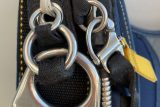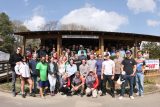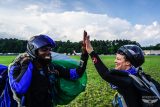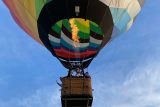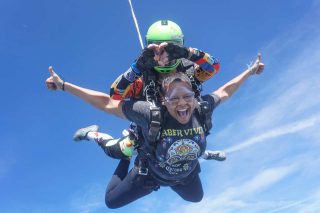The Elder Statesman: Bill Eisele
General
7 years ago
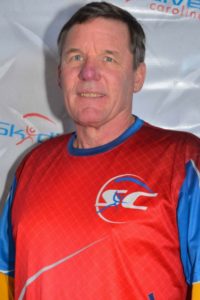
In skydiving, you come to the dropzone for adventure, but you stay for the special people. Bill Eisele is a special person in our community. Since joining our family in 1989, he has been two things: generous and consistent.
If you spend any time with Bill, you’ll learn of his generosity with his most precious asset: time. Through the years, Bill has served in many instructional capacities for Skydive Carolina and has bailed us out more times we can count when we’ve been short-staffed. More importantly, he has served our community by giving his time to help develop younger skydivers and teach them things he’s gained through a 40+ year skydiving career.
To try and sum up Bill in an opening paragraph isn’t really possible, but as you read through our interview with him, you’ll get a sense of how great he is and what he has meant to our community. As an organization and collective group, we are better because of him and we’re grateful for all he’s given us.
Enjoy this read with one of Skydive Carolina’s great people: Bill Eisele.
SKYDIVING
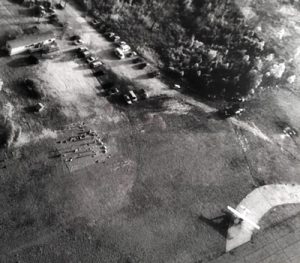
The early days of Skydive Carolina. Notice people packing on a tarp. The Cessna picture is 2198G, which the DZ still has today.
Bill, you started jumping at Skydive Carolina back in 1989 when the dropzone was a mere three years old. Can you describe what the DZ was like back then and are there any jumpers still jumping today that were in the sport back then?
The DZ was in a different location, about half-way down the runway we currently use, tucked back in the woods. Just a small trailer and a blue tarp for packing. Manifest was a clipboard being passed around. It was a much smaller group. Steve Vaughn, Bruce Travis and Alan Broadway are the jumpers I remember.
Skydive Carolina has grown up a lot since those early days. What would you say are the biggest changes or improvements to the DZ in the 32 years since Danny Smith established the DZ in 1986?
So many changes. It’s the combination of everything. Regardless of the quality or amount of facilities, the number and quality of tandem, student and rental rigs, the training program, the rigging loft, the snack bar, the store – none of that matters unless there is a quality staff. At every position or job, Skydive Carolina has a great staff and they keep improving. You were a big part of that.
Though you started jumping at Skydive Carolina in 1989, you actually learned to skydive in the late 70s elsewhere. Where did you learn to skydive and what was the circumstance that took you to the DZ that very first time?
I’ve been jumping 41 years and hit 4,000 skydives in April 2015. Still remember the first one, a static line jump in Moncks Corner, SC on April 24, 1977. Was trained by Jack Reed and the jumpmaster was Mike Morgan. He wrote, “Excellent exit and arch, need DRCP (dummy ripcord pull).” I remember calling my mom, all she said was, “You aren’t going to do that again are you?”
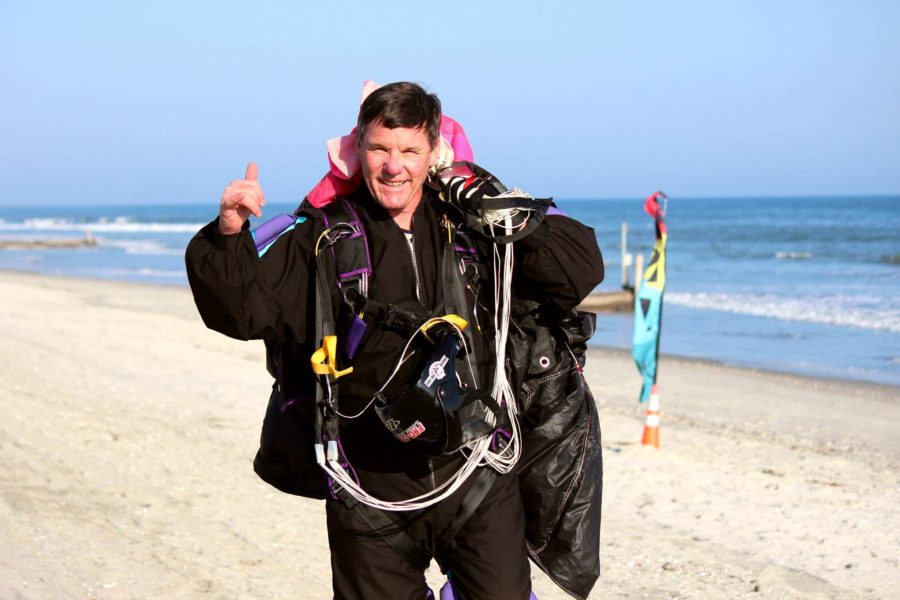
Bill after a beach landing.
Skydiving gear and technology has advanced since your early days in the sport. What innovation do you think has had the greatest impacting in making the sport statistically safer?
Gear was a combination of surplus military gear and “homemade” stuff. Much of it was old, it was all round and green. The stuff worked, usually. As the sport advanced there were many changes that were field-tested by jumpers, unfortunately with many injuries and fatalities. Three examples were the Martin Baker plastic ripcord handle, the Blast handle for reserves, and the belly band on the original Wonderhog container.
The Martin Bakers and blast handles were “cool”, light and less likely to snag. I had both. All that was good except the plastic handles would break when it was cold. That leaves you with a tiny steel ball on the end of a twisted steel cable to pull to open the container. We would talk about how we would pull that bare cable if needed, no clue if it would have worked.
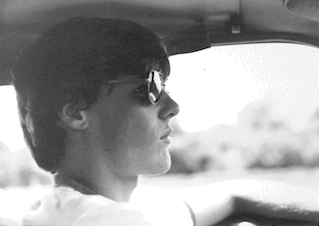
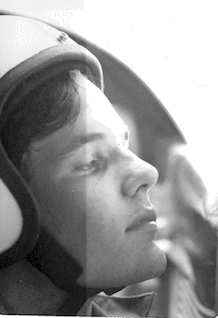
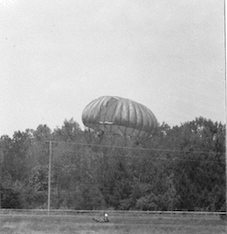
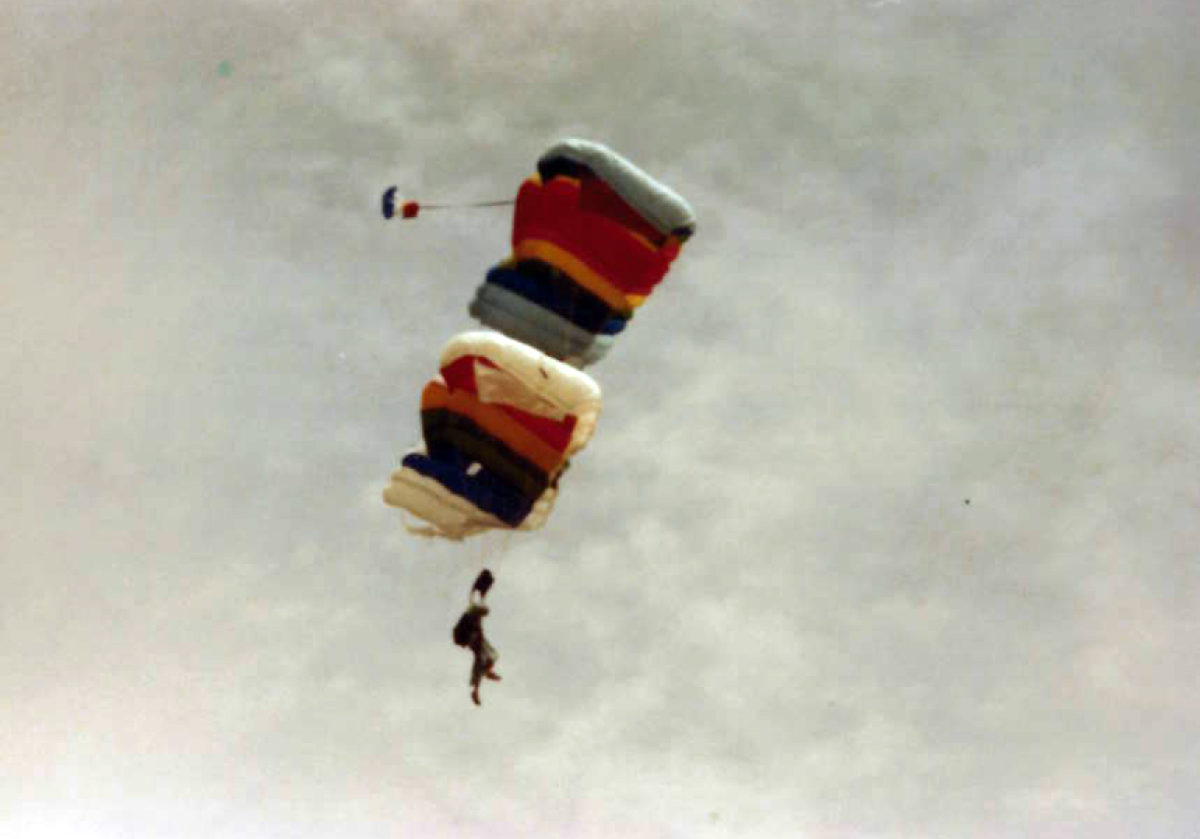
The Blast handle was impossible to pull in any direction except straight down. Not a good thing when it’s your last chance and you’re passing thru 1200’.
The belly band was used because we thought you had to have a strap to keep you in the rig, like a seatbelt. The problem was it held your pilot cute pouch and bridle routing. This was the first mainstream throw-out pilot chute design. That was fine until the belly band was twisted trapping your bridle, resulting in a pilot chute in tow.
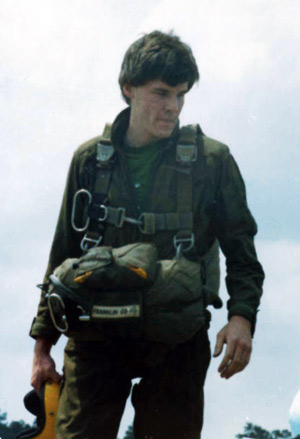
Bill survived the military surplus gear era.
Many folks were killed with these three gear designs.
The 3-ring, reliable AADs, and better container systems have eliminated most gear issues. But I must say that the basic and advanced training that’s available is also a huge factor.
Who were your early heroes in the sport that you once looked up to and why?
The ones that I once looked up to I still look up to. There was Jack Reed, Mike Morgan and Paul Fayard. Then more well-know Jerry Bird, Roger Nelson, Mike Michigan, Roger Ponce, Carl Daugherty and all the organizers at the old Z-Hills.
These were some of the pioneers in the sport and are part of the group that “invented” the basic relative work skills that are commonly taught today.
Who do you respect in the sport today and why?
I have two answers here. There are those pushing the sport forward and those in the trenches making it work for the average jumper.
There are “new” aspects to the sport and plenty of folks pushing them forward. Be it the variations of free flying or wingsuiting, what is being done today was unimaginable 10 or even 5 years ago. I’m not involved in those areas so don’t know too many of the top participants.
The folks in the trenches, working with students, building skills and those simply enjoying recreational jumping are the army that keeps the sport alive.
Through your career, you’ve held several instructional ratings between static line, AFF, and tandem. Through all those years of teaching and taking many first timers on their first jumps, do you have a particular person that resonates with you that you once jumped with or taught?
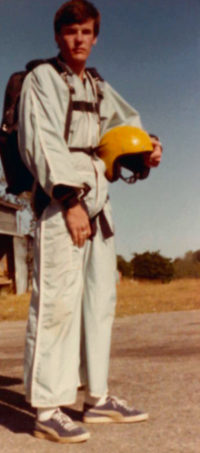
There are so many. Some had physical disabilities and wanted to challenge themselves or conquer a fear, a few had a short time to live and needed to live more, a couple were on the 246-way World Record in Chicago with me, some became instructors, one a DZO and others mainstream skydivers.
Then there was an elderly man named Paul, he left an indelible memory. The Paul story is of death, commitment and boundless living.
In your 40-year jumping career, you’ve seen a lot. What are the most common errors you observe by jumpers on any given day?
Overconfidence and lack of knowledge. Skydiving is an unforgiving sport. You must never stop learning and relearning. The cost for either can be quite high.
You have more than 4,200+ skydives and over 74 hours spent in free fall (amazing). Can you name your top five most favorite skydives out of all those jumps and share their significance?
Four of them would be my first static line jump, first wingsuit jump, first “real” AFF jump and the World Record. Three of these were terrifying. The first jump: C-182, 2800’, T-10 with a belly-mount reserve, crawling out on the strut and letting go – the trust that so many things would go right. The wingsuit jump was equally terrifying, mainly because I understood all the bad things that could happen and the consequences. AFF is demanding with many unpredictable events. The World Record was amazing. Holding a 246-way for seven seconds it felt like – well you had to have been there.
The fifth would be the collection of all the fulfilling jumps I’m presently enjoying. The smiles, the learning, and the camaraderie. It’s unusual to have a bad jump and the level of success is amazing.
For those interested in becoming licensed skydivers, what advice would you offer in order to have a long career in the sport as you have?
The basic stuff: learn from qualified instructors, take care of your body, and learn your gear and emergency procedures. This is a social sport, treat people with respect. Take a break when needed.
Personal
Your mother is an incredible person. You’ve shared that she’s 87 years young and still setting records in swimming. Would you tell us a little more about her? She sounds like an extraordinary person!
I’d be proud to. She grew up in Durham NC, graduated from UNC at Chapel Hill, and has four kids, I’m the second oldest. She has always been a strong figure in my life. Once retired, she and my dad traveled the world. She continues to do that with three recent trips: out west, Mexico and Churchill Manitoba. Out West she retraced the journey of Lewis & Clark on the Columbia and Snake rivers. Mexico was to see the Monarch butterfly winter sanctuary in Sierra Chincua. Ascending to 11,500’ one is surrounded by millions of butterflies that have migrated from Canada and the US. Churchill Manitoba was a 6-day Arctic tundra expedition to see the polar bears. I was lucky to have traveled with her on a Smithsonian/National Geographic expedition into the rainforests of Costa Rica and Panama.
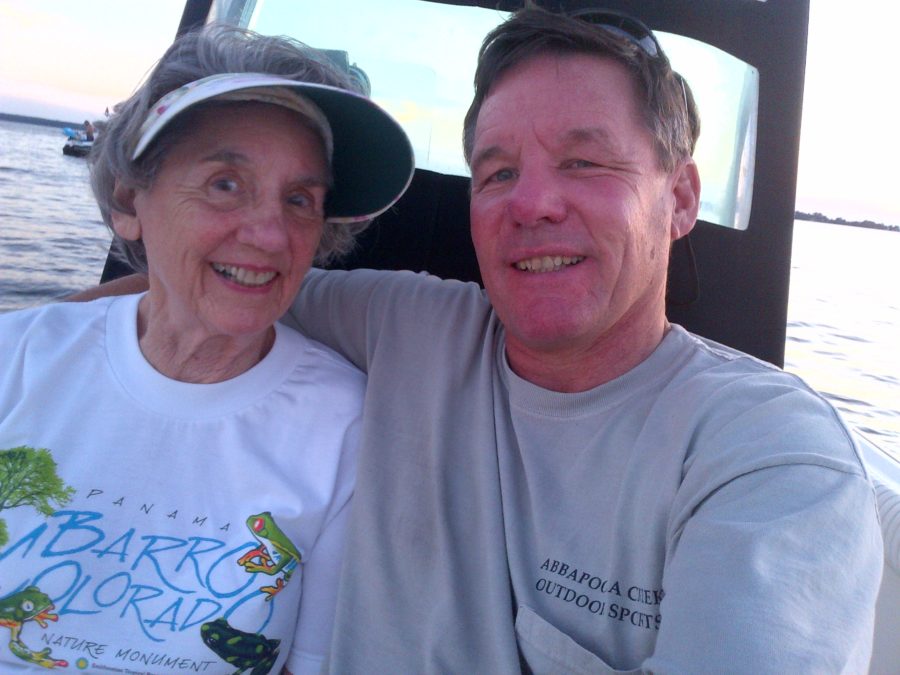
Bill with his incredible Mom!
She started competitive swimming in the Masters Swimming Program 18 years ago. What she’s accomplished and continues to accomplish is simply amazing. She travels across the US for National level meets. The last one was in Birmingham AL where she won 6 gold medals. Over her career, she’s had 240 top 10 swims on a national level, holds 100 state records and is listed in the World Records in seven events. She’ll be inducted into the Senior Sports Hall of Fame this month. I hope some of this is genetic.
In the 1970s you lived in one of the most beautiful and remote places in the world – the Galapagos Islands. Tell us about that. What took you there? What’s that story about?
I graduated with a degree in Marine Biology from the College of Charleston. Worked for Kiawah Island doing Loggerhead Sea turtle work and then with the SC Dept of Natural Resources doing marine research until the job terminated due to lack of funding. My aunt had met a researcher at the Smithsonian that was currently working in Galapagos. A couple letters were exchanged and seventeen days later I was off to Galapagos arriving with a full backpack and a duffel bag. Immersion is the only appropriate word. Imagine strolling into a dirt street tiny wooden town with each person just staring, looking ragged-out carrying a backpack, it was uncomfortable. Luckily I spoke some Spanish and made it to the Darwin Research Institute.
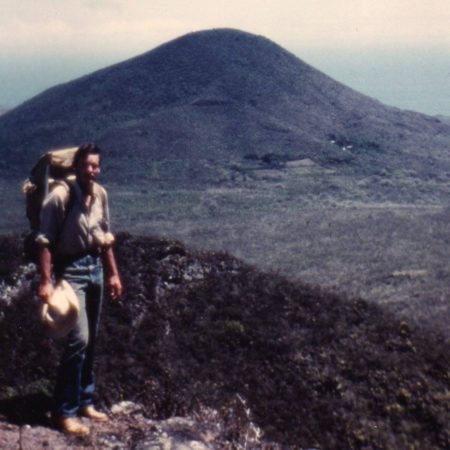
Bill in the Galapagos weighing in at a slight 156lbs.
By American standards, this is a poor society in a desolate area. The inhabitants spend the majority of their time on the bottom 2 tiers of the Maslow’s Hierarchy of Needs pyramid meeting basic human needs – security, shelter, and food. An interesting observation was that they were happy, they had lived like this their whole life and didn’t know anything else. No TV, no newspaper, no phone, no electricity, no cars, no anything except what you carried on your back – don’t break any bones or get a toothache, the solutions were amputation and extraction. They worked hard and took care of family six days a week. Sunday was play day with chicken fights, horseback races, volleyball and soccer. During my time there, there was no reason to shave or cut my hair. Living on fresh foods, 6% Ecuadorian beer and going native wasn’t too bad. All the locals knew was that I was 6’2” and played volleyball. Oh, the simple things of life. This lanky yankee was befriended and named Buffalo Bill, probably smelled that bad too.
I was assigned to assist the research teams, lucky me. Traveling to the various islands I got to experience everything Galapagos had to offer: sea turtles, finches, 15’ manta rays, land iguanas, killer whales, giant tortoises, penguins, marine iguanas, and scuba diving with schooling hammerheads. The longest assignment was on Floreana, a remote volcanic island, researching the Hawaiian Petrel. A few weeks of climbing up and down the loose rock of Cerro Pajas, in the crater and on the outside, hunting chickens and forging fruits for food, walking a mile to get water from a spring, riding bareback, camping, bathing in the ocean, free diving for lobsters and seeing penguins swimming, it was a magical time. My Boy Scout training saved me from weeks of misery.
Upon my return to the Darwin Station, about six months after my arrival, it was nearing time to leave. I was there when President Reagan was shot and didn’t find out for a couple weeks. Mail takes 2 weeks and I saw the cover of Time magazine. It was clear that this society wasn’t affected by the outside world. Little communication from home and no familiar voices. It was my choice to leave, missed my family and girlfriend, if I still had one. One more expedition to the northern part of the Archipelago, to Isla Pinta, crossing the roughest seas I’d ever seen, I was off for home. A one-day stop in Quayaquil, a mountain trail bus ride to Quito to go into the Andes highlands, then Miami, then home. No one knew I was coming, the letter about my return arrived a few days later. After six months away with no modern conveniences, it was strange. I was a strong, lanky 156 pounds of unrecognizableness. My mother didn’t care, I did get a shower in Quito. The next day it was off to surprise my 3rd-grade teacher girlfriend, my future wife.
You are very involved with your community especially with the Boy Scouts of America. What first motivated you to get involved to help others and your community?
I was a Scout and earned the Eagle Award. When my son wanted to join Scouts I re-engaged and have been there for the past 22 years. The rewards and sense of accomplishment have far outweighed the cost. It’s the oldest character education program
in the world, one that prepares young people to make ethical and moral choices in their life. I’m currently the VP of Properties and one task is to coordinate construction at Camp Barstow. This is a volunteer group that has given thousands of hours and completed 102 projects improving the facilities at Barstow. One project we designed was campsite shelters. It’s that design that was used to build the Wolf Den at Skydive Carolina. The genesis of the Wolf Den was the tragic death of Pete “Lobo” Langehans in 2014, a guy with a big grin and happy disposition. Truly a sad time for everyone. The construction was therapeutic with many memories told and tears shed. It resulted in a fine remembrance of an admirable individual.
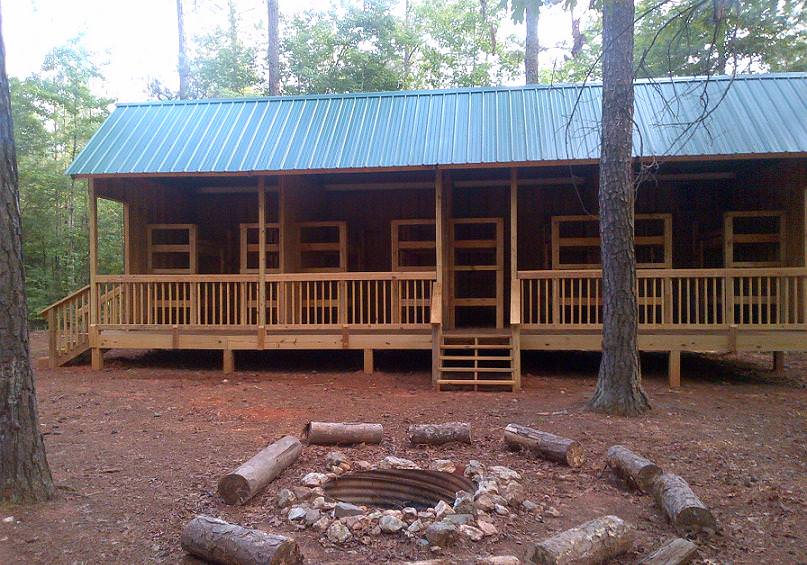
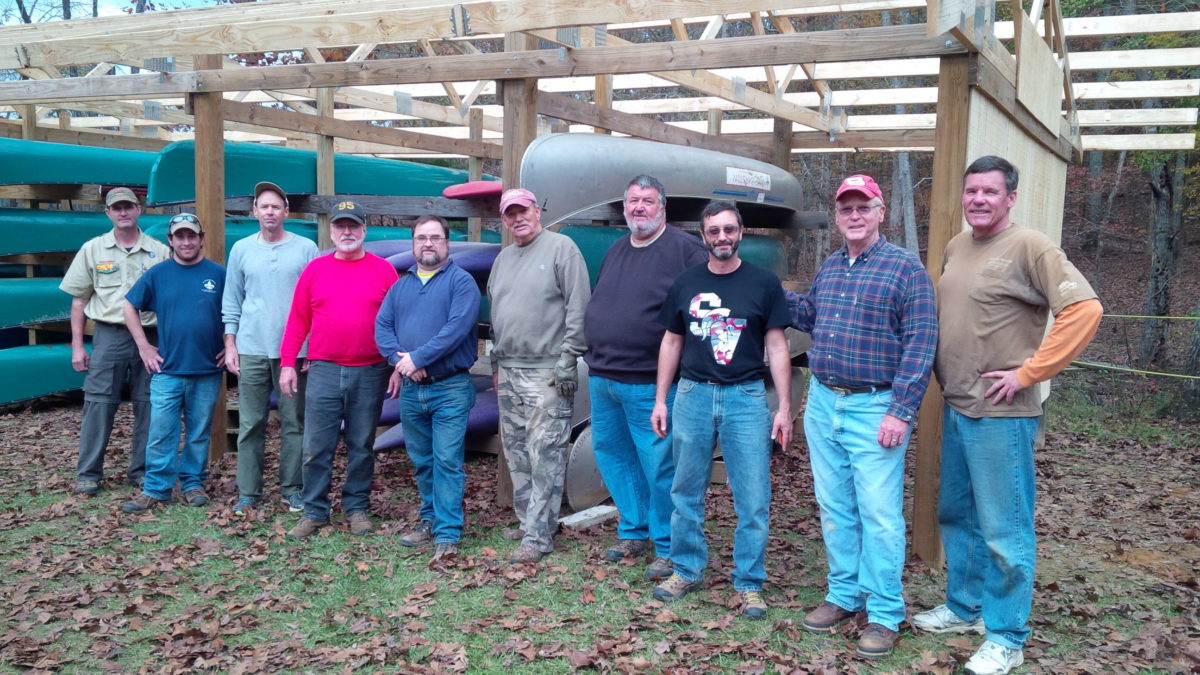
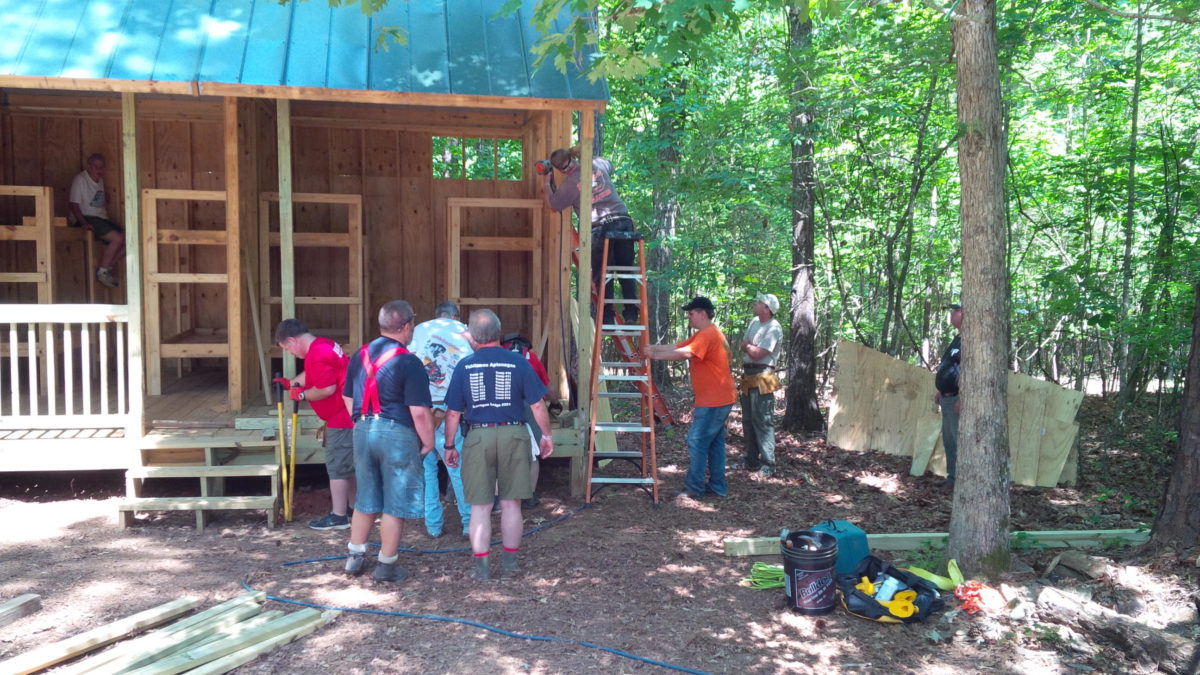
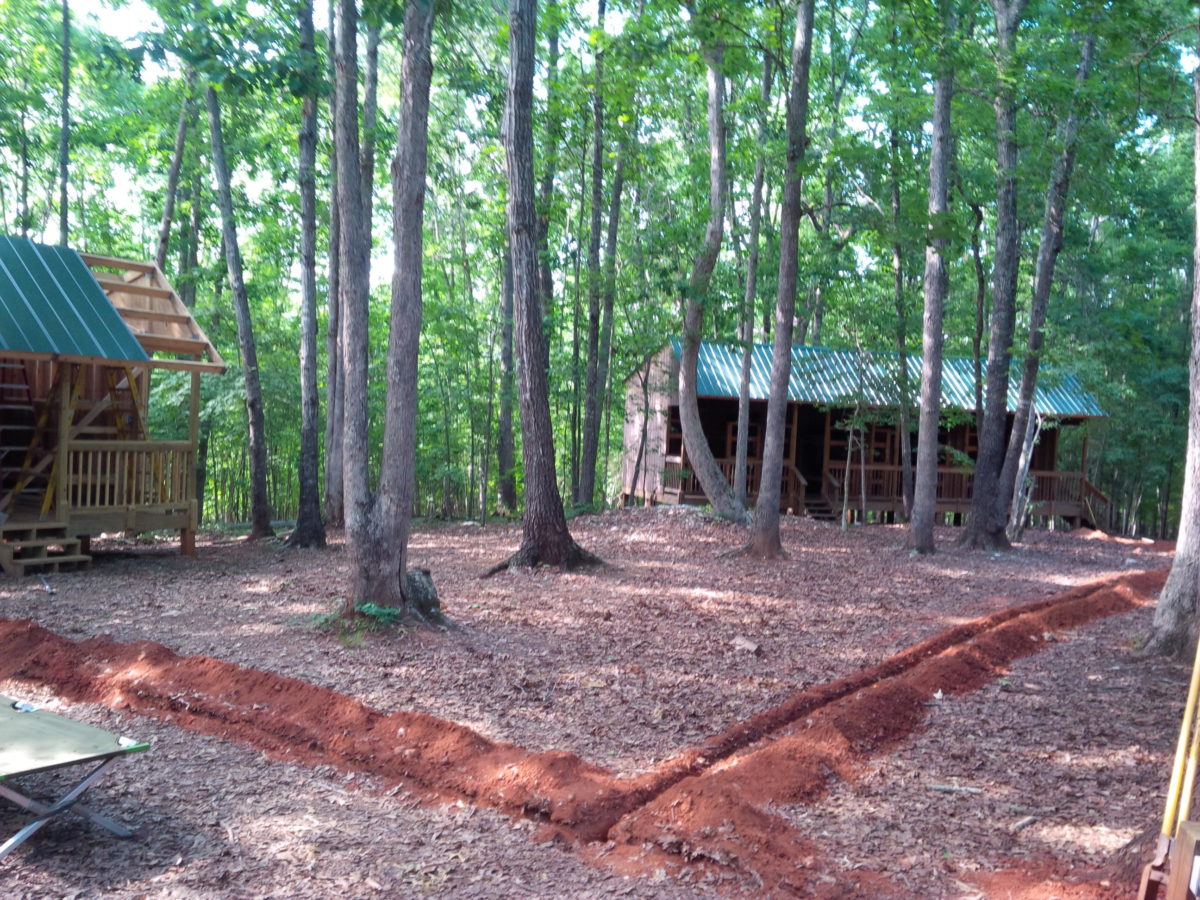
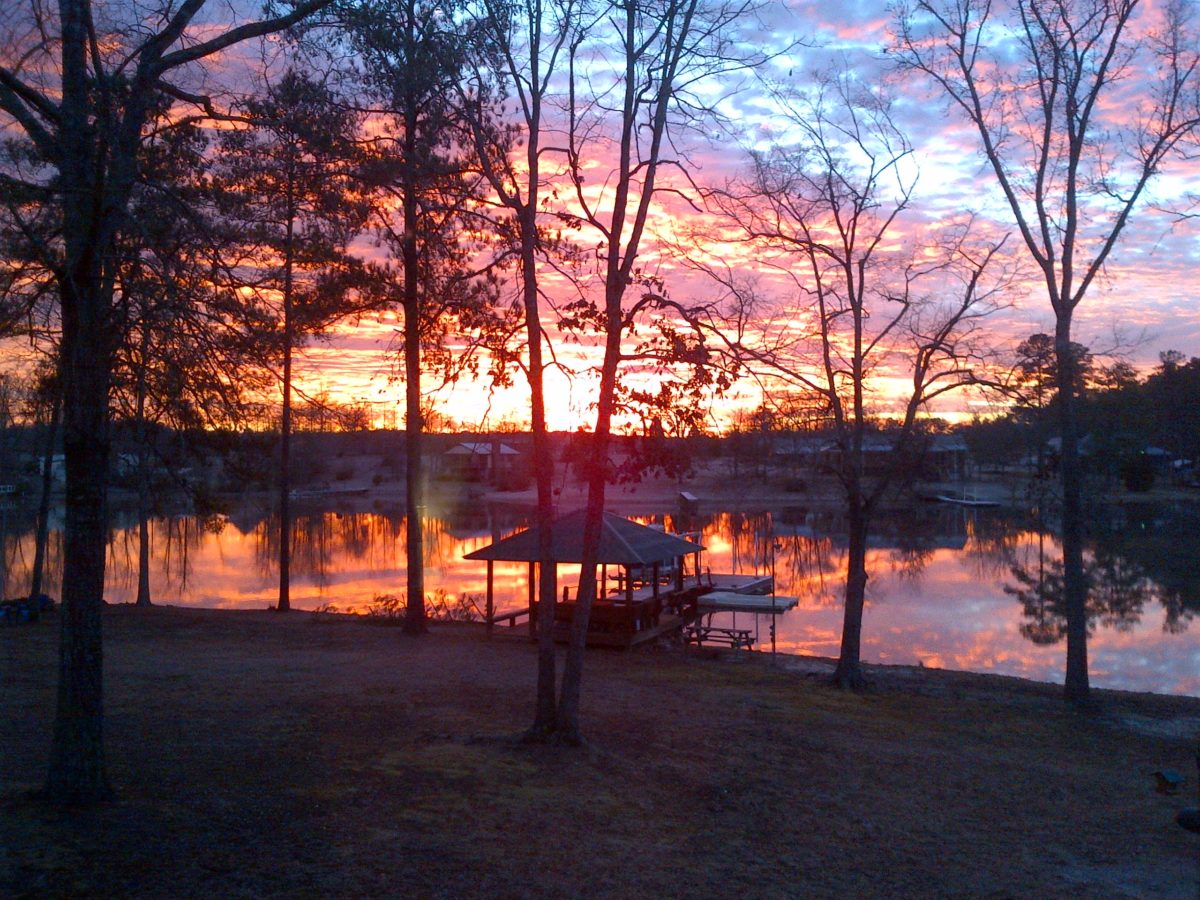
In August of 2015, your son Hunter nearly lost his life as a result of a rare blood disorder that affected his intestines, kidneys, blood and brain. You experienced every parent’s worst nightmare as you were told to expect the worst. Hunter went on to make a miraculous recovery and is living a healthy life. Coming out on the other side of that, how did that experience change you and/or what did you learn from that experience?
Hunter was a paramedic in Charleston when he got sick. After a week in the ICU it was determined that he was brain dead and remained that way for 5 days. I was pressured to pull the plug with the attending ICU doctor saying, “there is a limited amount of time we can maintain this level of medical care.” Other specialists that I’d trusted said they had done everything that was possible. After 9 days of constant pressure and exhaustion, it was difficult to process, he is my only son. Two things delayed that decision. I decided that my daughters birthday the next day, September 11, would not be the day I killed my son, and the constant love from friends gave me that last bit of strength. Miracle of miracles, the next day he started his recovery with simple eye movement. It’s a long story.
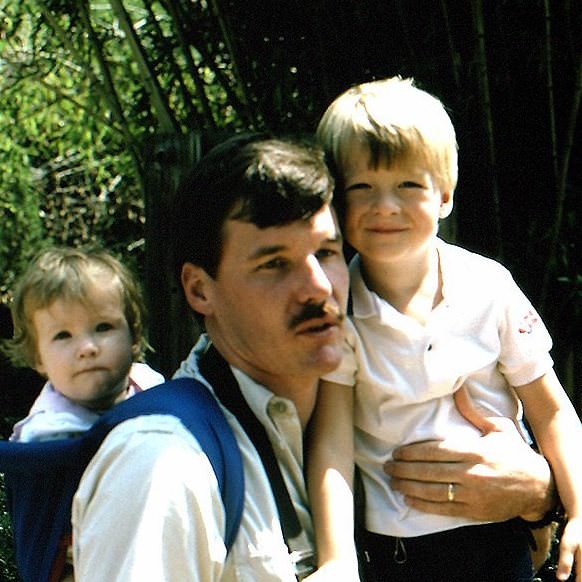
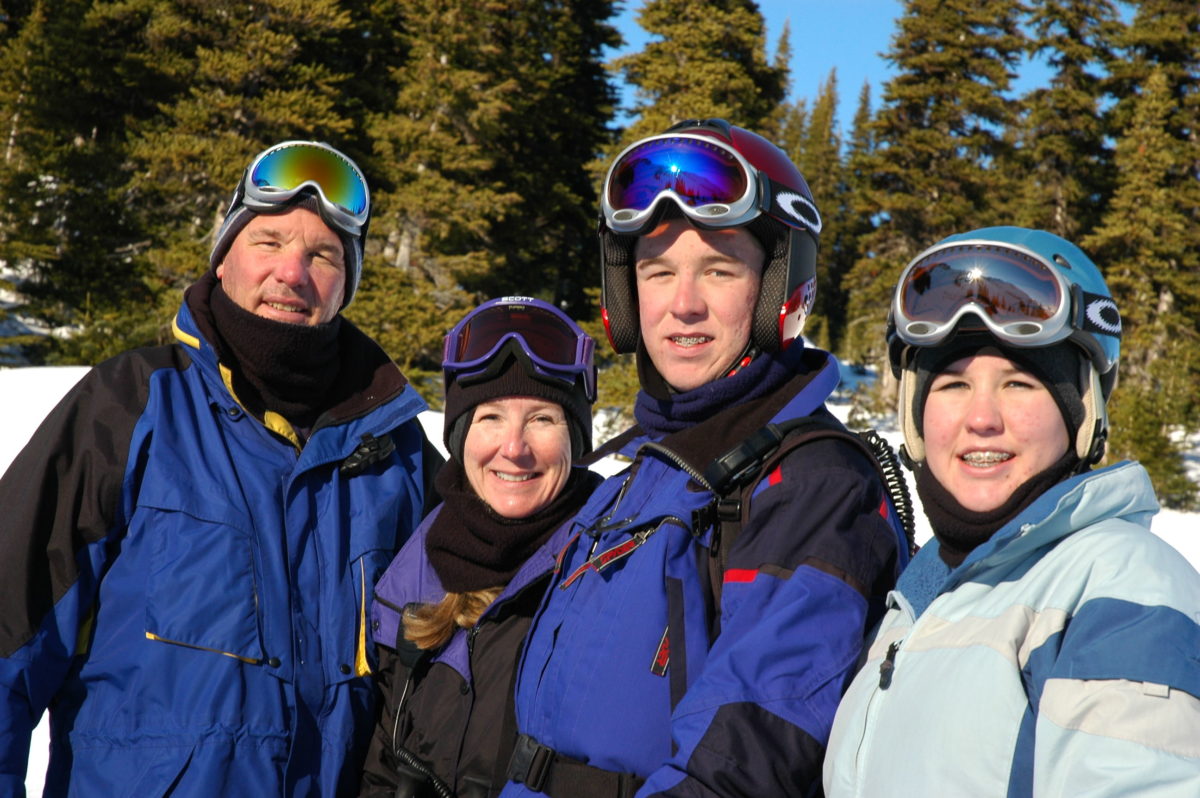
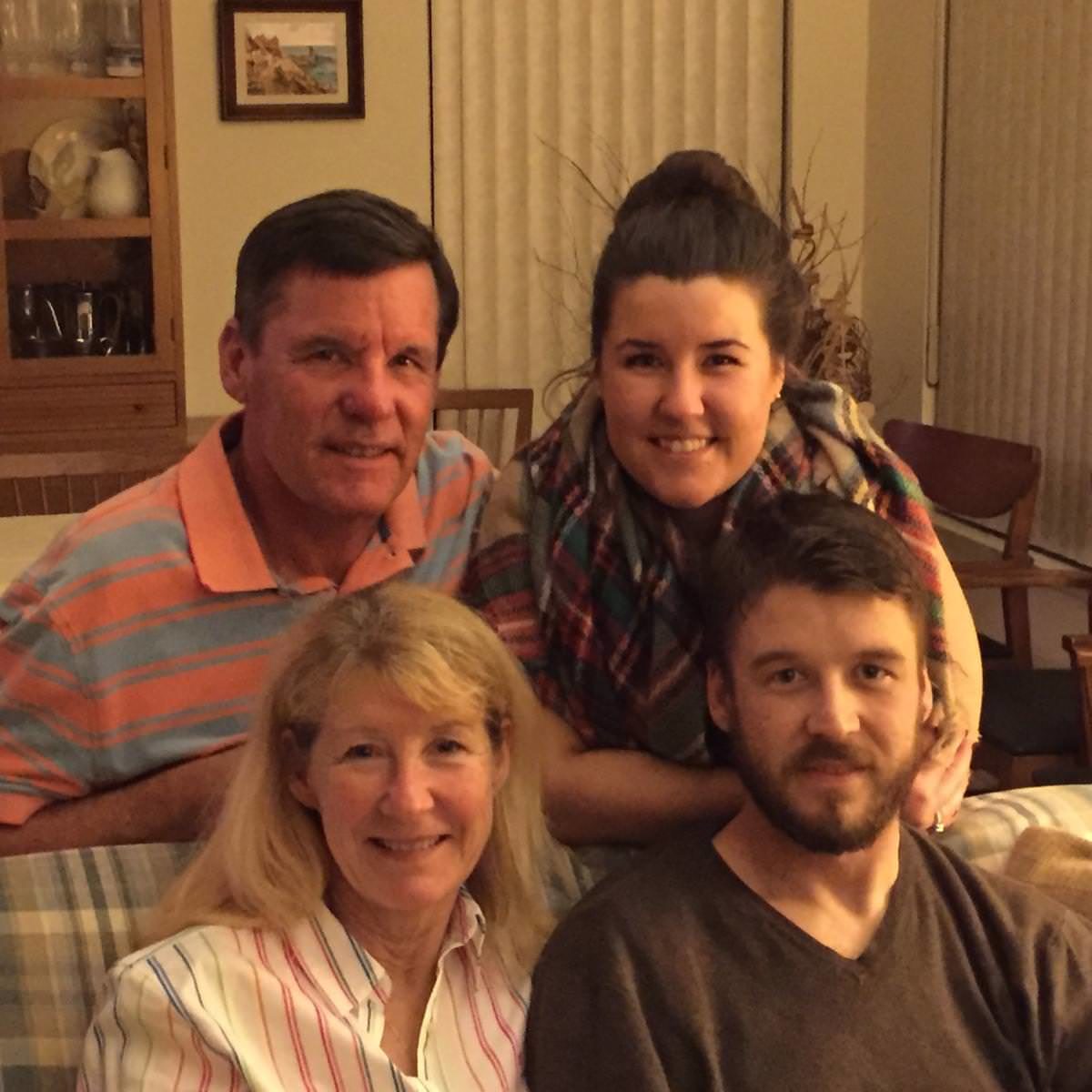
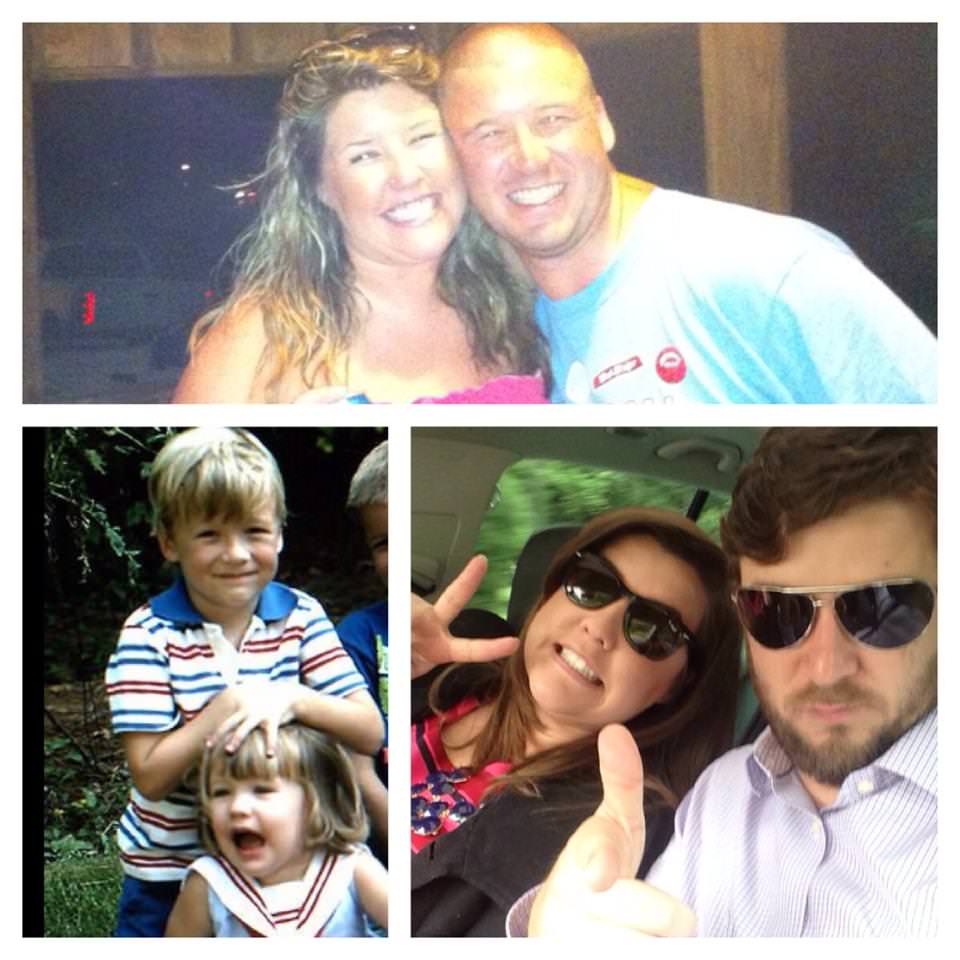
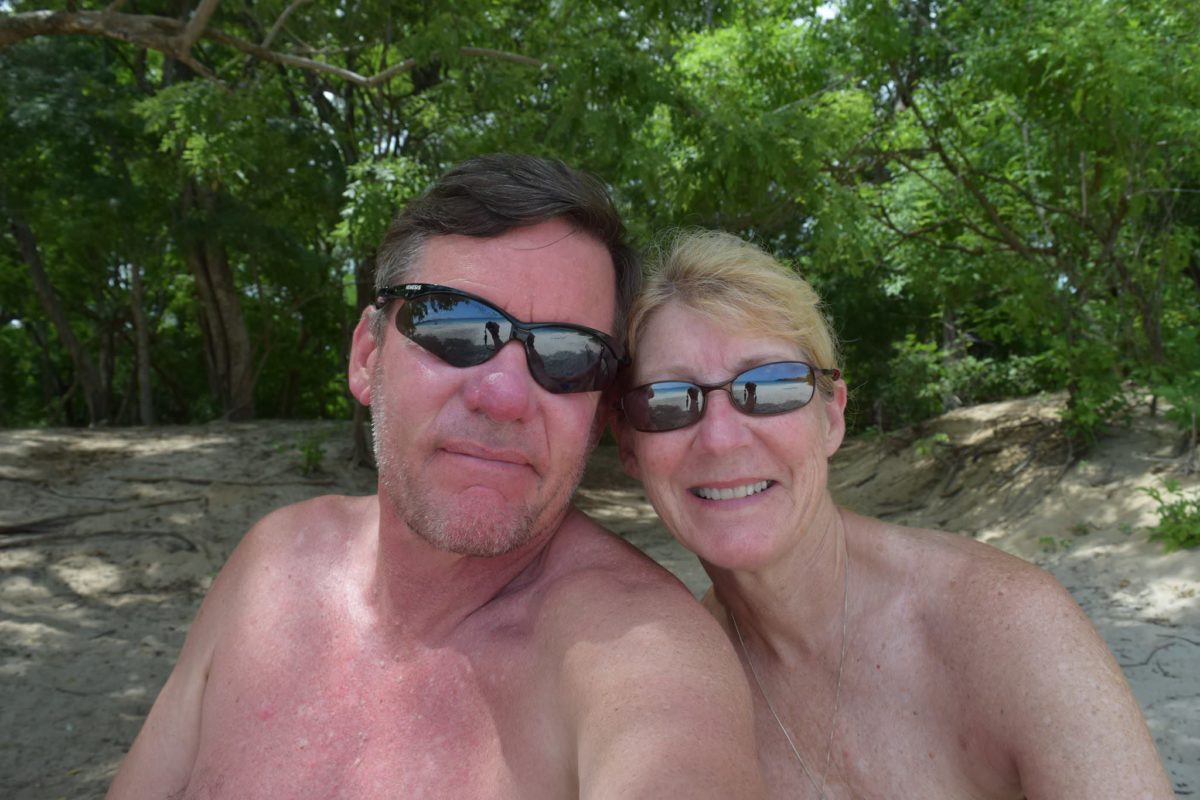
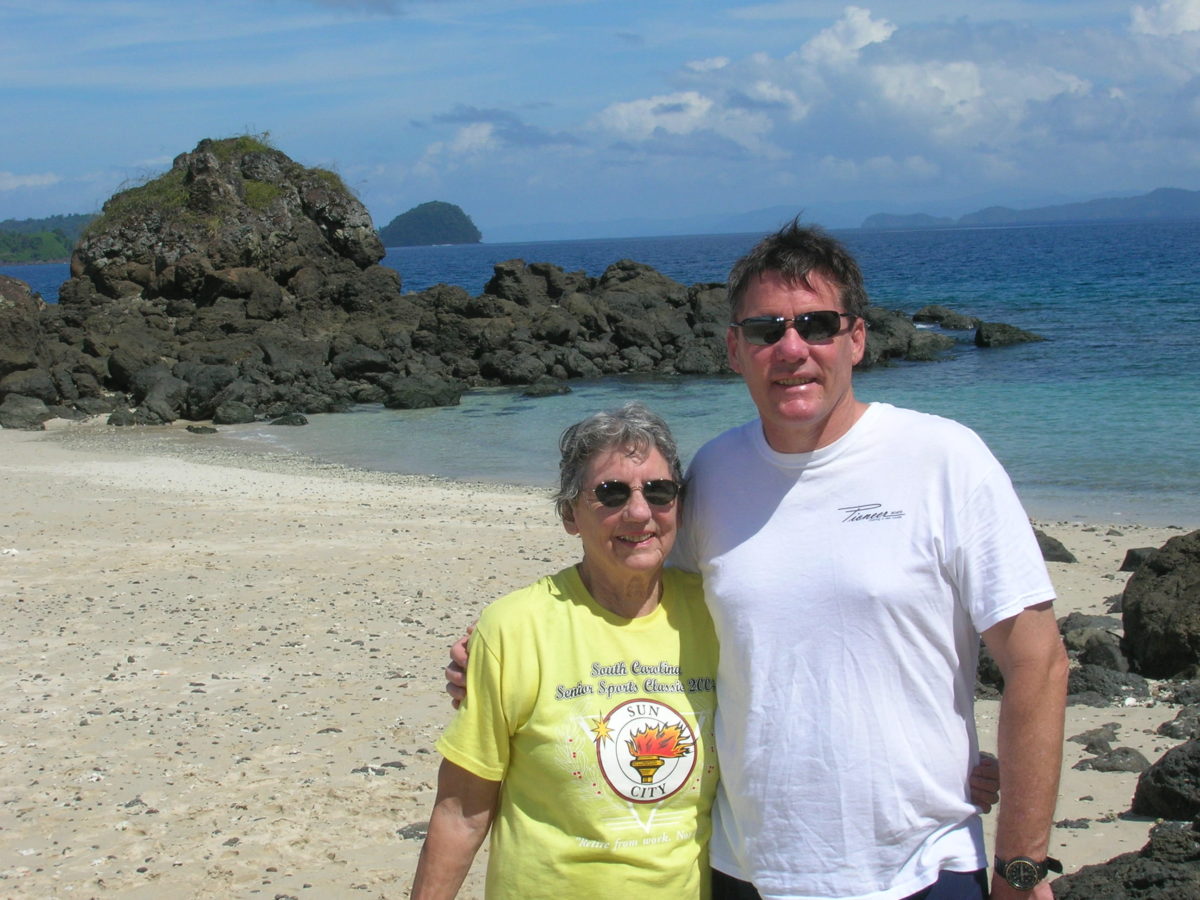
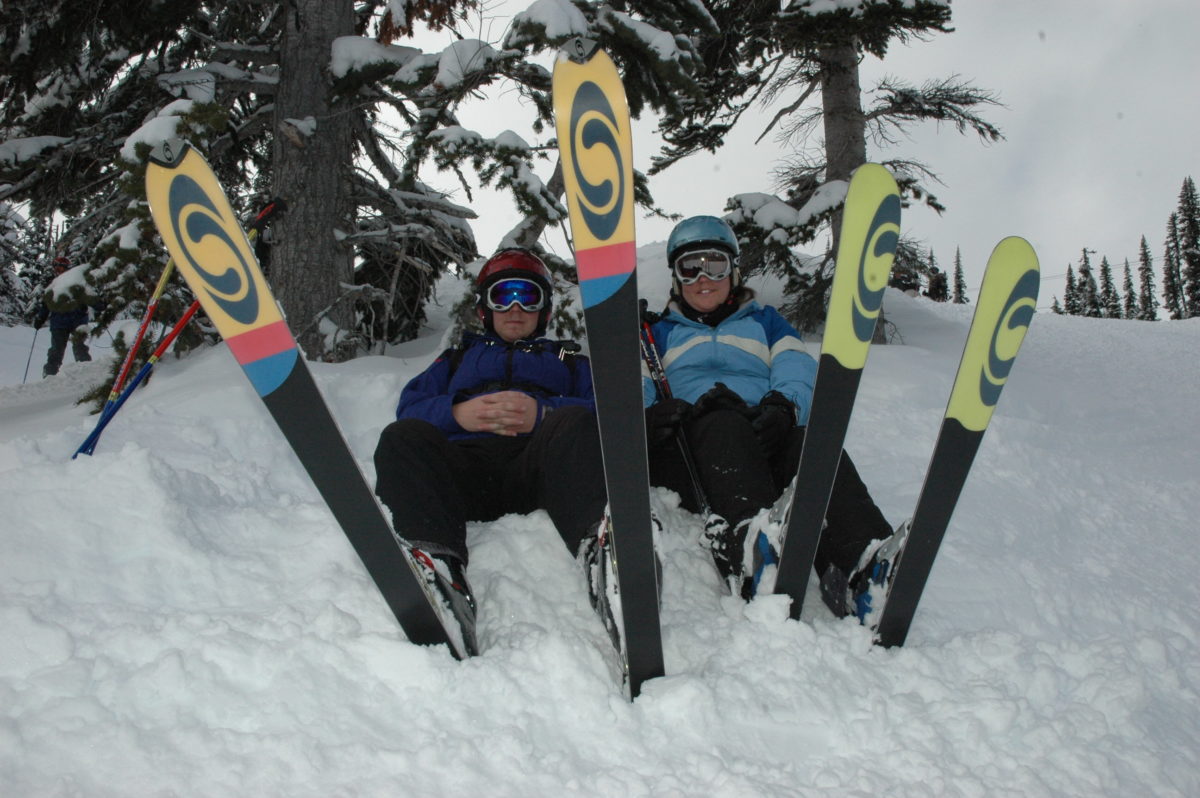
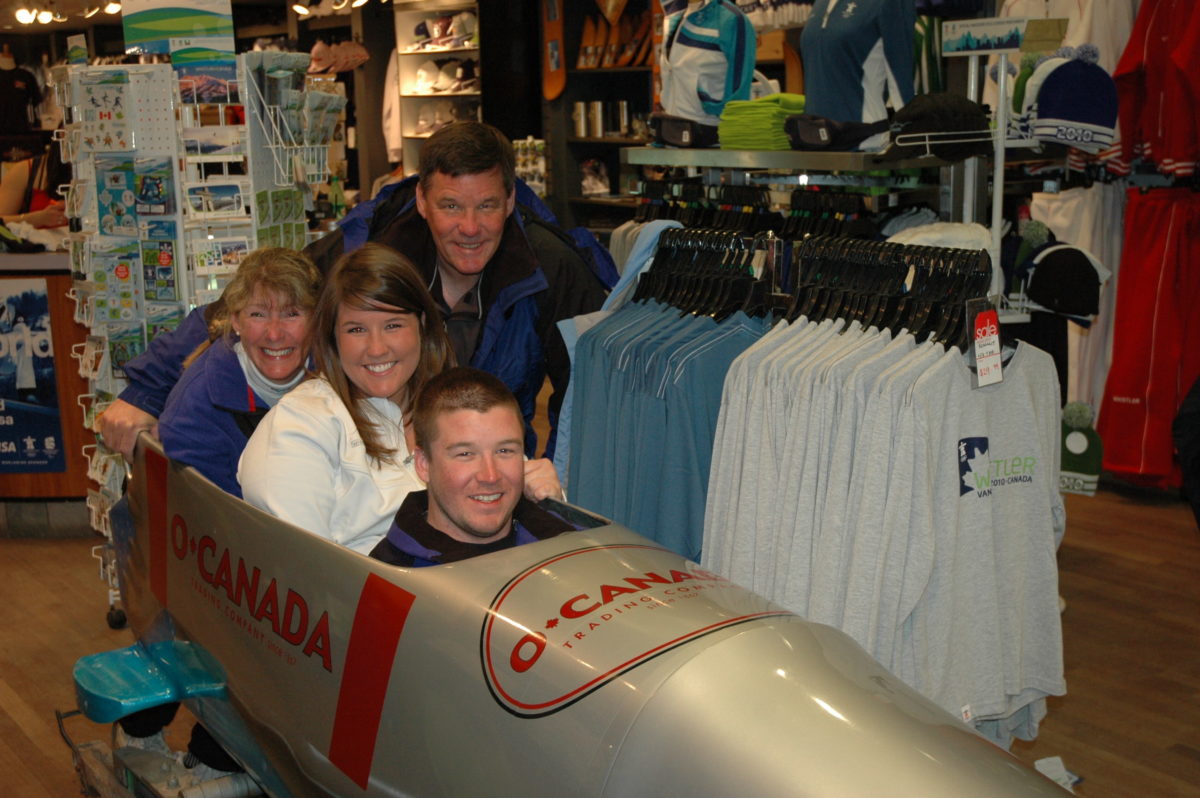
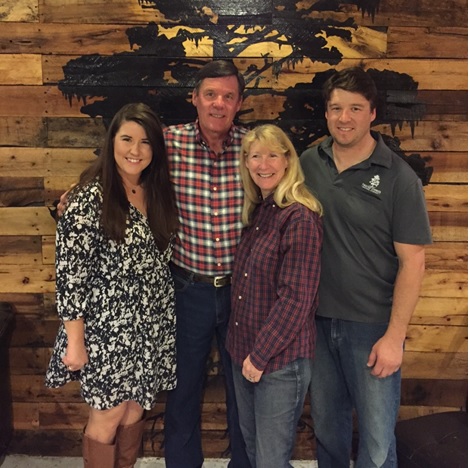
None of the doctors have any explanation as to how or why he recovered. His kidneys were destroyed by the disease but 3 weeks after he started to recover they began working. Up to that point, we were told he would be institutionalized. One can take whatever message they choose from this experience. My faith in God is stronger now.
I look at things differently now and know:
No man can go it alone.
Prayer works.
The love and support of friends is invaluable.
You have a beautiful family, have had a long career with SCE&G, a life filled with adventures… a life that many would aspire to have for themselves. What wisdom can you share with those wishing to live a life of their dreams?
Find something you are passionate about and do it. Share it with those around you, then share your knowledge and personal wealth. If your vocation is not your passion then have an avocation that keeps the fire burning. I’m lucky to have skydiving, construction, and boating. I can quit my job today, do any of those three and be quite happy. I have two part-time job offers in construction and boating. The boating will be much more fun.
Having accomplished so much, what excites you today? What do you look forward to?
Learning, constantly learning and challenges. I look forward to doing things that others think are impossible. No one in my company thought I could make $21 million in 4 years creating and operating an energy services business, but I did it.
I don’t mind spending money but hate to waste it. When I decided that our lake house needed a total renovation we did it ourselves. After hours of reading, instructional videos and toil, my wife, kids and I gutted and rebuilt the house. It’s been our get-away spot for a few years and we enjoy sharing it with others.
Can you share a failure or apparent failure that ended up being a positive for your life?
That’s a long list. Failure can drag you down, or you can learn from it and try again. I was cut from the 232-way record attempts in Lake Wales. From that failure, I was determined to make the 300-way event in Chicago.
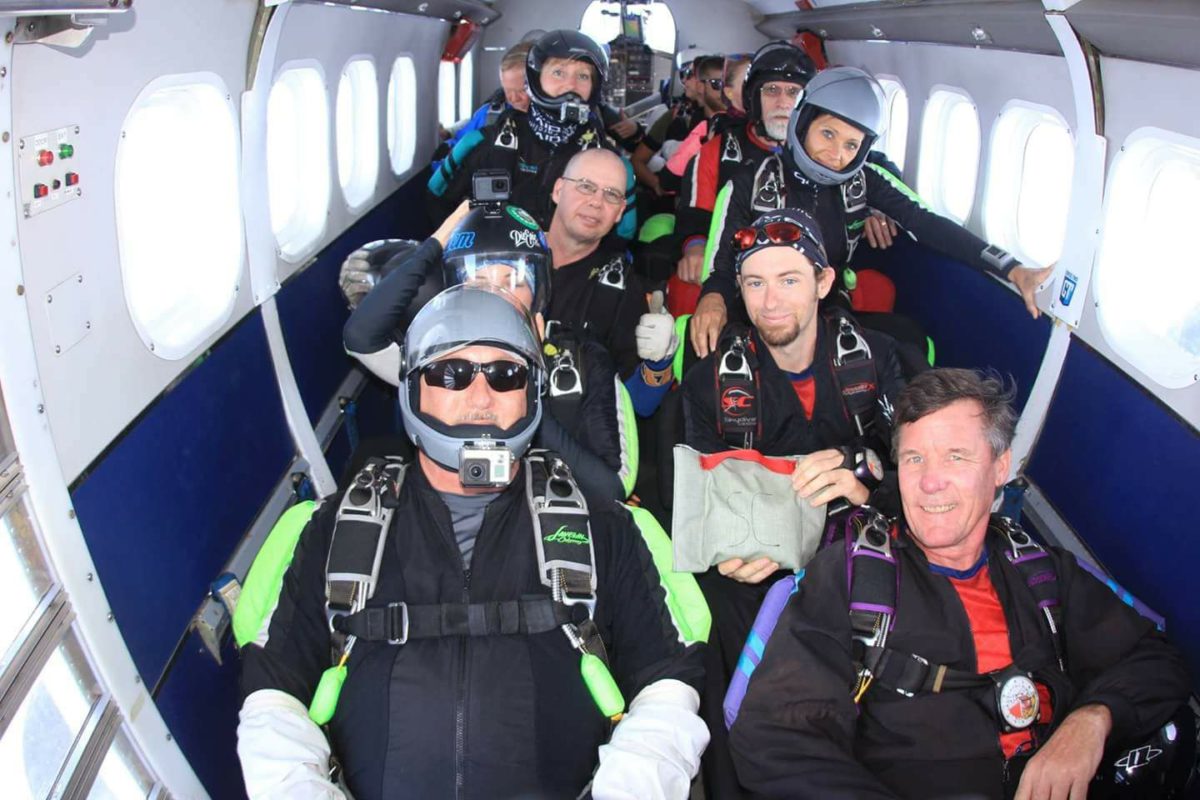
If you could go back in time and give your younger, 18-year old self some advice, what would you tell that younger, Bill?
Don’t rush to have it now, the turtle does win the race. Whatever that race is it takes time, sacrifice and dedication to get there.
How would you describe the perfect day for Bill?
I have so many luvs that it’s impossible to say. It could be sunshine, friends, family, water, and skydiving, or it could just as easily be me alone with my thoughts, solitude, in the woods, carving a stick while watching nature.
Who or what inspires you?
Tragedy inspires me to write poetry. Two notable events were Pete’s death and the loss of my father. One of the most beautiful writings I’ve ever experienced was penned by my sister when my best friend Eric was dying of cancer. She wrote, “There are some who bring a light so great to the world, that others are warmed and inspired by it. You are one of those special people.”
I’m inspired by this and wonder what will be written about me in the end.
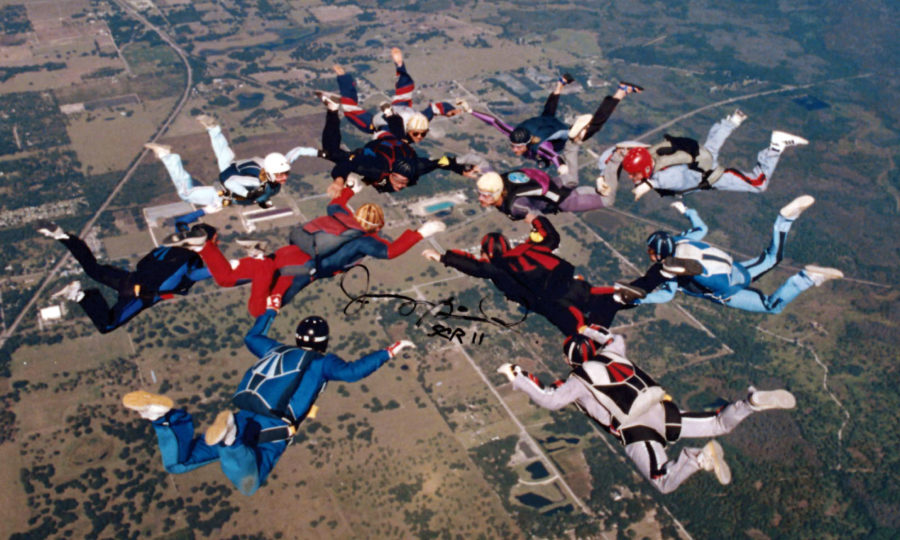
Favorite Movie of All Time
I’ll cheat with two. Jaws and Silence of the Lambs. Jaws has serenity and raw terror, much like life. Silence of the Lambs shows the mental capability of the human creature. It can be used for good or bad.
Best aircraft you’ve ever jumped from?
Anything that resembles a flying school bus. I’m a tall guy and the tailgate aircraft sure are nice.
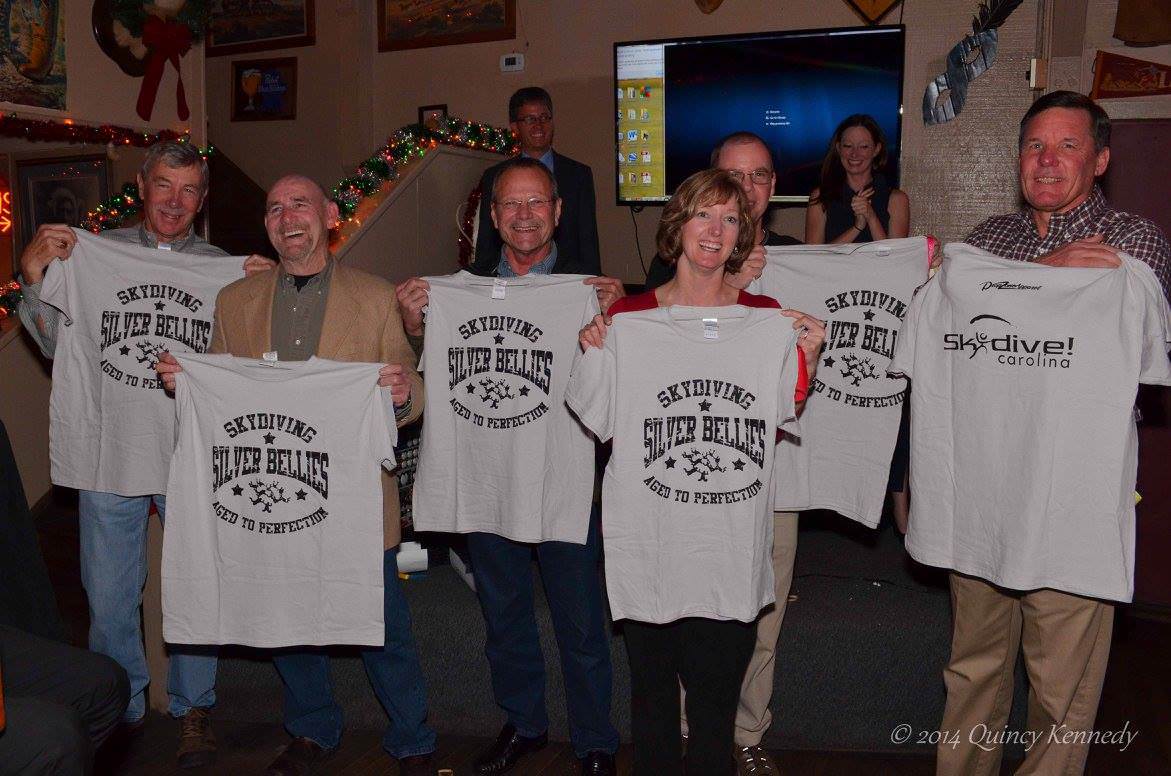
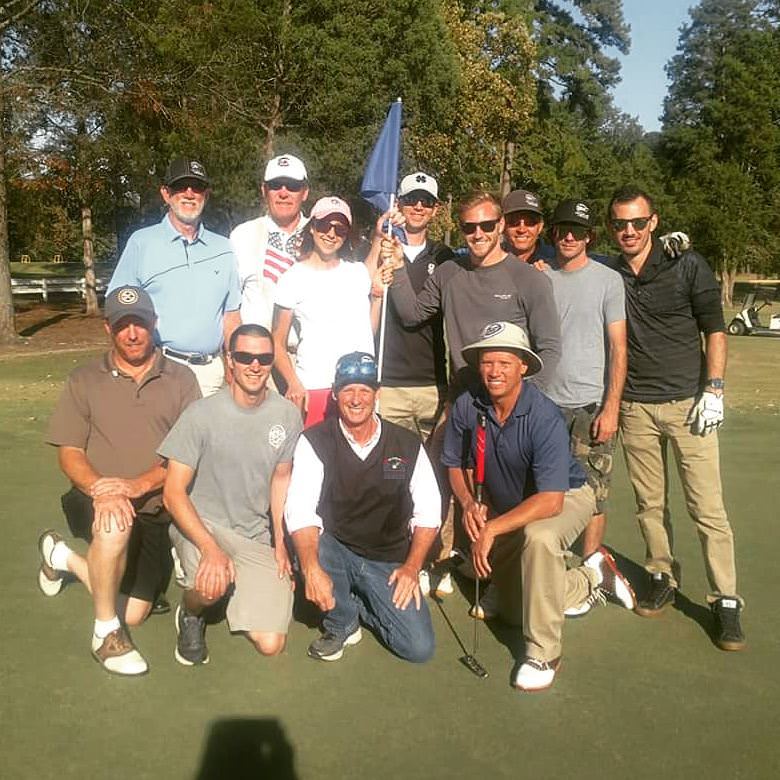
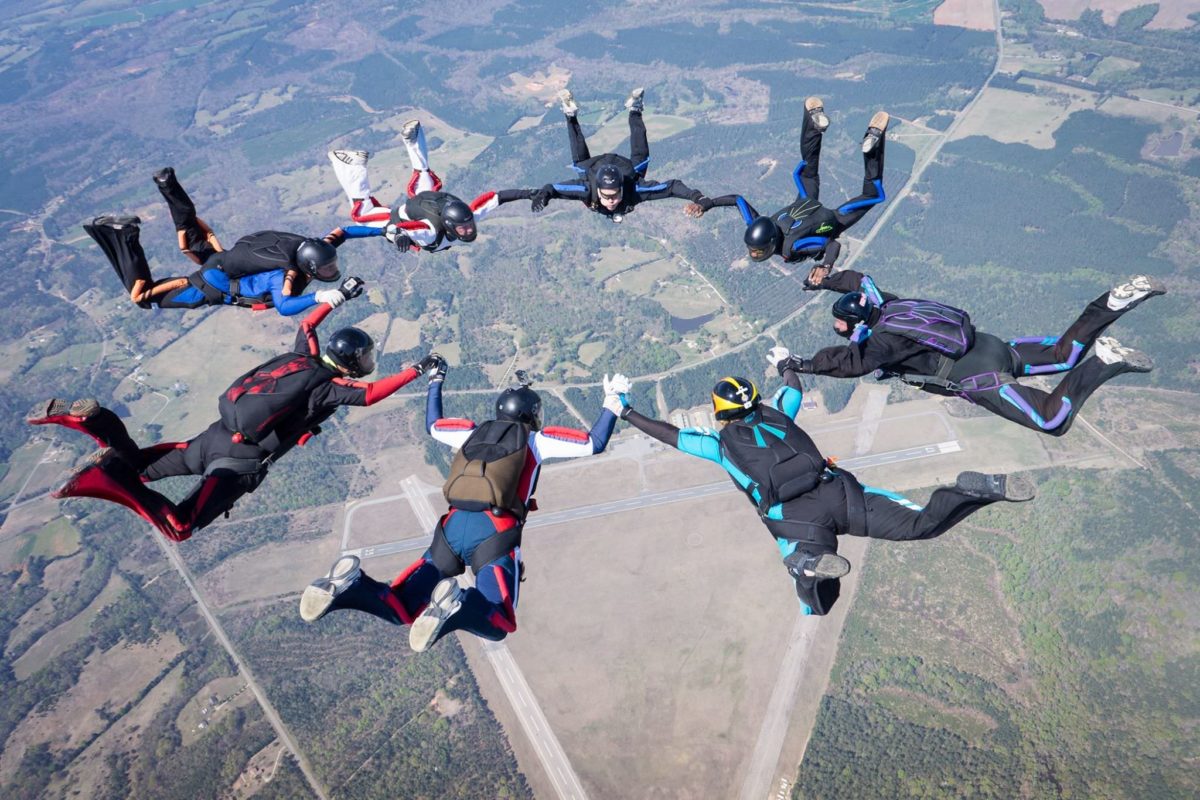

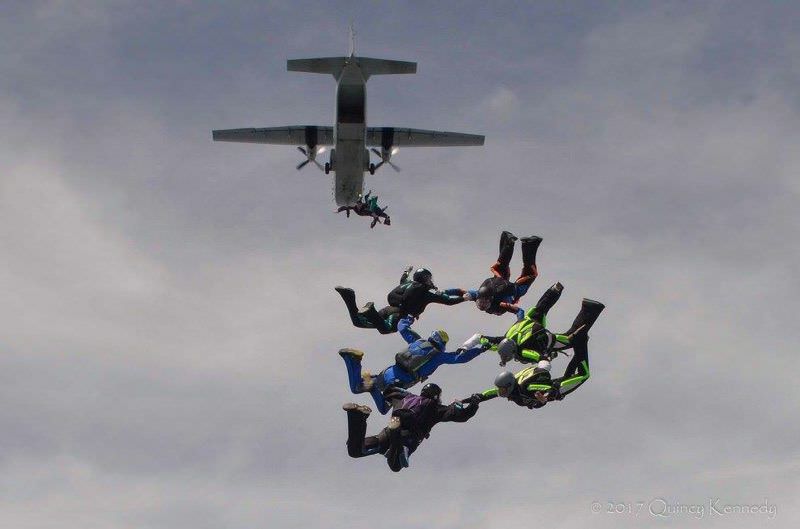
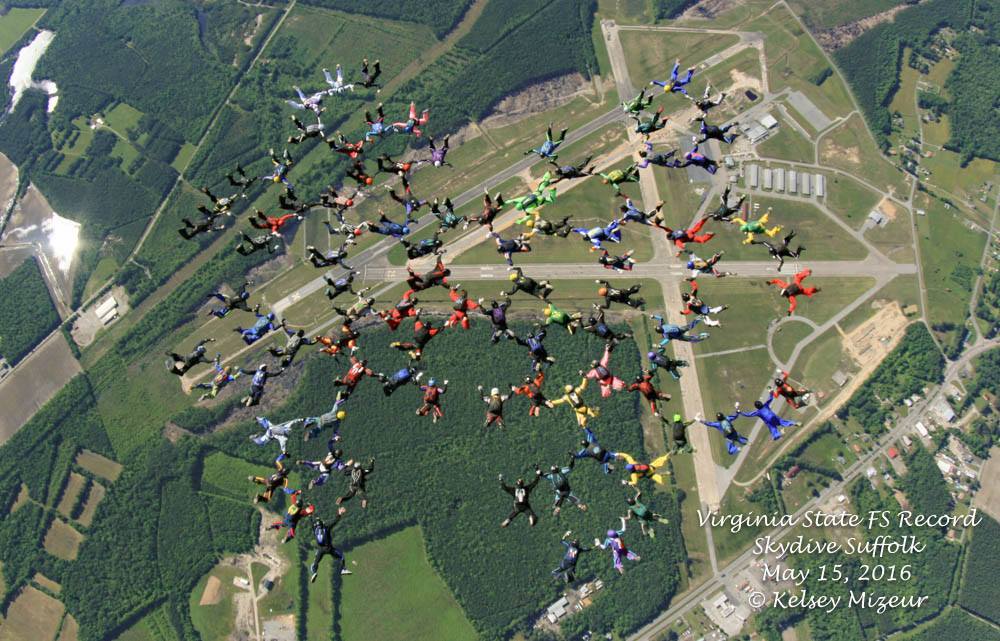
Best book you’ve ever read?
Jonathan Livingston Seagull, “Begin by knowing that you have already arrived” and “Keep working on love”
Favorite TV Show:
Now that the Olympics are over… TV is mindless entertainment. Current favorite is Blacklist.
Most used app on your iPhone:
For now it’s email because of work. I’m dumb – Is that an app? Facebook is used the most, great way to keep up and say hi to friends in between actual conversations and hugs.
If you could make a skydive with any three people in the world, who would they be?

i). My mom hasn’t made one – yet
ii). Eric, never had that chance
iii). Paul, if he were to return I’d want to go with him.
Best place you’ve ever traveled to within the US?
Home. Home was always where my parents were. It wasn’t the place, it was them.
Best place you’ve ever traveled to outside of the US?
Whistler, British Columbia. The family memories of there are tremendous.
Place you’d most like to visit that you’ve never been to before?
Scotland to learn my heritage, Sir William Wallace
What equipment do you jump?
Container: Javelin, 3rd one, the others didn’t wear out but it was time for a change
Canopy: Pilot
Reserve Canopy: Performance Designs
Altimeter: Analog Altimasters, 2 of them
Helmet: Z1
Jumpsuit: Bev Suit
AAD: CYPRES
